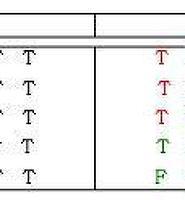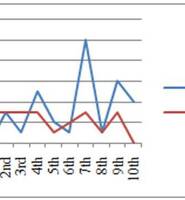Helianthus
[감각및지각심리학] The maximum limit amount of soy sauce to fool your friend ‘secretly’ 본문
[감각및지각심리학] The maximum limit amount of soy sauce to fool your friend ‘secretly’
룬이 2010. 4. 16. 13:23ü Purpose; utilize the concept of “absolute threshold” in funny ways
ü Preparation; coke (1.5L), thick soy sauce, measuring cup, straw, paper cups (8pcs), eye patch, pen, ruler, paper (record table)
① Pour coke into paper cups for same amount (120ml) by measuring cup.
② Draw lines on straw for same interval (1.5cm) by ruler.
③ As you can use the straw like a spuit, (in Korean, 스포이트) put soy sauce into each paper cup with straw spuit as much as you planned to do. (1st~7th node)
④ Write numbers on each paper cup to recognize for you to know how much you put the soy sauce.
ü Procedure;
① When a participant is ready, explain the outline of the experiment and the way of answering toward stimulus and then put an eye patch on him or her.
② Present a serial of olfactory stimuli (coke mixed with soy sauce or pure coke) in randomized order at regular interval time. → The method of constant stimuli
③ Record the response of participants on the record table sheet.
ü Details in procedure and effort to reduce compound variables;
① Way of answering; When a participant detect something strange except coke smell he or she answer, ‘I detect it’, and when a participant doesn’t detect something strange except coke smell he or she answer, ‘I don’t detect it’.
② Serial of stimuli; 8 stimuli which are decided by the table of random sampling digits composes 1 serial, and there are 3 serials. Each participant experiences 3 serials of stimuli (24 stimuli). But there can be the cases which are affected by the sequence of 3 serials, so I vary the case of serials’ sequence into 6. (ex. Serial 1-2-3, 1-3-2, 2-1-3, 2-3-1, 3-1-2, 3-2-1)
③ Interval time between stimuli; 5 seconds
ü Result and explanation
I calculate the proportion of “I detect it” for each case (ss0j; coke only, ss1j; coke+1 joint of soy sauce, … , ss7j; coke+7 joints of soy sauce)
① Generally, the proportion of “I detect it” response increases when the intensity of stimulus gets bigger.
② But the shape of the curve is different from ‘S shape curve’ in the textbook. (especially the point of ss5j and ss6j, which is just above of the chance) This result can be interpreted as the existence of compounding variables or my mistakes for processing the experiment. What is the reason for ss3j~ss6j to show similar outputs? First, measuring problem. When I used the straw spuit, it was hard to measure the exact amount because certain tension in the straw prevented soy sauce droplet from falling off. As a result the residuary soy sauce in the straw can affect the amount ought to be mixed with coke. Second, I didn’t control the exposure time of stimulus to air. Chemical molecules that evoke ‘smell’ are spread in time, which weaken the olfactory experience. And it results that the participants who smell at the beginning of the experiment response sensitively but the other participants who smell at the end of the experiment response dully. So all the above make data blurred, causing the unexpected curve.
③ Although the data wasn’t exactly match with the S shaped curve, about 3~5 joints of soy sauce (about 0.2~0.3ml) per coke 120ml seems to be appropriate amount for fooling friends secretly.
ü I really enjoyed conducting the olfactory experiment, but at the same time I felt that it is really difficult to manage all the possible compounding variables especially for olfactory experiment. Smell is powerful experience which can be remained strongly still after the much time is passed. On the other hand, smell becomes easily insensitive. I think that all this interesting characteristics of olfactory perception make researchers study smell though it is tough to do.
'심리학' 카테고리의 다른 글
| [브랜드심리학] 월드컵 특수 광고에 대하여 논해보자. (0) | 2010.06.22 |
|---|---|
| [감각및지각심리학] Monocular perception (0) | 2010.05.25 |
| [감각및지각심리학] “I decide to give up my eyes.” (0) | 2010.03.18 |
| [문화심리학] 김용옥,『여자란 무엇인가』 - 절대와 상대 (0) | 2010.02.22 |
| [소비자심리학] 경제불황과 소비자의 심리 및 행동 - 정신분석학적 관점 (2) | 2010.02.19 |



